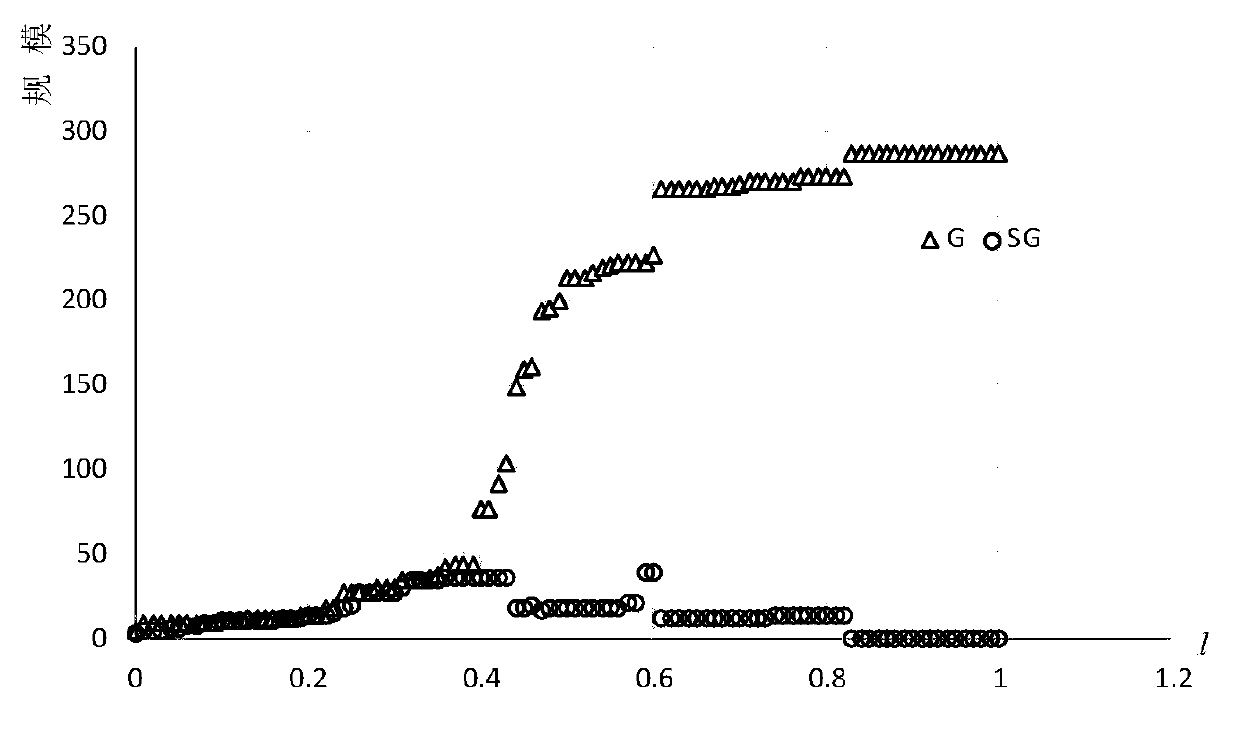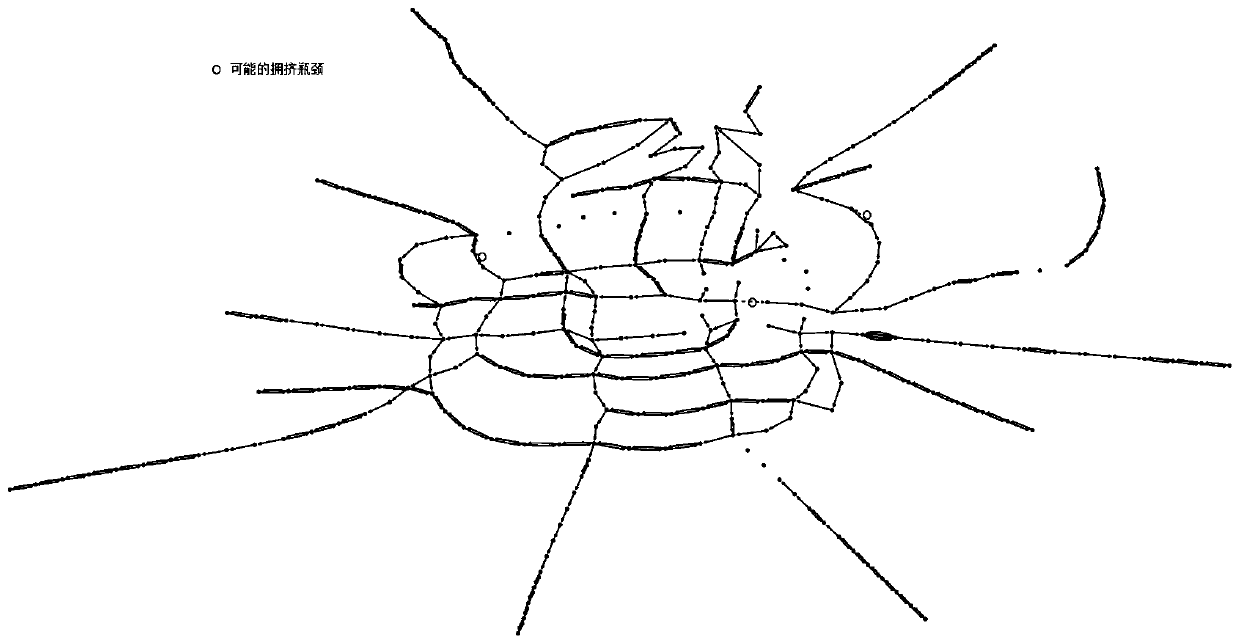A bottleneck identification method for track network congestion based on percolation theory
A technology of seepage theory and network congestion, applied in data processing applications, instruments, calculations, etc., can solve problems such as few bottleneck identification, lack of dynamic bottleneck analysis, etc., to achieve the effect of improving operational efficiency
- Summary
- Abstract
- Description
- Claims
- Application Information
AI Technical Summary
Problems solved by technology
Method used
Image
Examples
Embodiment Construction
[0023] The present invention will be further elucidated below in conjunction with the accompanying drawings and examples. The present invention provides a kind of track network congestion bottleneck identification method based on seepage theory, and described method step is as follows:
[0024] 1. Abstract the track network into a directed topological graph:
[0025] The P-space method in the complex network model construction method is used to construct the track network model, that is, track stations are regarded as nodes, and if two stations have direct lines, then they have edges. The track network used in this example is the Beijing track network, and its topology is as follows figure 1 shown.
[0026] 2. Select the full load rate of the section as the characterization index of the section state of the track network:
[0027] The calculation method of section full load rate is:
[0028]
[0029] In the formula, l ij Indicates the full load rate of section ij, m in...
PUM
 Login to View More
Login to View More Abstract
Description
Claims
Application Information
 Login to View More
Login to View More - R&D
- Intellectual Property
- Life Sciences
- Materials
- Tech Scout
- Unparalleled Data Quality
- Higher Quality Content
- 60% Fewer Hallucinations
Browse by: Latest US Patents, China's latest patents, Technical Efficacy Thesaurus, Application Domain, Technology Topic, Popular Technical Reports.
© 2025 PatSnap. All rights reserved.Legal|Privacy policy|Modern Slavery Act Transparency Statement|Sitemap|About US| Contact US: help@patsnap.com



